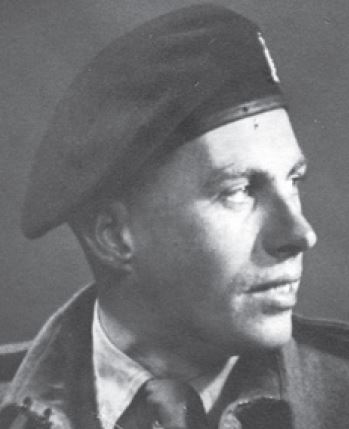Cpl Thomas Hope died in Bristol on 28 November 2003 aged 94 years.

His military career started when he joined the local Cavalry Territorial Army unit, The 2nd Royal Gloucestershire Hussars (2RGH) at Ilfracombe in December 1939. Tom trained as a driver operator on an armoured fighting vehicle.
2 RGH left the United Kingdom on 15 August 1941 for the Middle East theatre of operations. Tom served as a member of a tank crew in ‘H’ Squadron through the many battles fought in the Desert by 2 RGH.
This included Operation Crusader in November 1941, Operation Knightsbridge and the ferocious Battle of El Alamein in October 1942 as part of The 8th Army under the command of Gen Bernard Montgomery. During this period Tom was posted as ‘missing’ but managed to rejoin his Regiment.
Due to the large number of casualties experienced at El Alamein, it was decided to disband The 2nd Royal Gloucestershire Hussars and post them as reinforcements to other armoured regiments. Tom’s ‘H’ Squadron was posted to The 8th King’s Royal Irish Hussars who were a Regiment in The 7th Armoured Division.
Following the defeat of Rommel, The 8th Hussars, with The 7th Armoured Division returned to the UK in late 1943 to prepare for the invasion of North-West Europe. Tom landed with the Regiment on the Normandy beaches on 8 June 1944 as a member of a Cromwell tank crew. The Regiment was immediately involved in the bitter fighting to break out of the beach perimeter.
With the very close hedgerows of the Bocage country, it was completely different to the open spaces of the desert and resulted in heavy casualties for tank crews. Tom took part in Operation Goodwood, which was one of the major battles of the breakout.
Tom continued fighting with the Regiment through France, Belgium, Holland the Rhine Crossing and the fighting across the North German Plain which ceased at Hamburg in early May 1945. Tom was wounded in action on 8 August 1944 and finished the war as a Cromwell tank commander.
After release in the summer of 1946, Tom devoted his life to the service of his fellow men. He spent several years working for Dr Barnardo’s homes in London and South Wales looking after their children. On leaving Dr Barnardos he spent 18 years employed by the Children’s Department of Bristol Corporation, again looking after the interests of children. Finally, in 1972, Tom joined the Pathology Department of Bristol University as a technician until his retirement in 1984. Again his colleagues held him in the highest regard.
Tom was a founder member of the Bristol Anglo-German Society being on the executive committee and a Treasurer. They sadly miss him. He was very fond of Bristol and was always concerned with the planning of new developments within the city and was a member of the committee of the Brislington Conservation Society dealing with the planning and development of the area.
Tom was also a member of St Luke’s Church in Brislington, who again are very grateful for his time and commitment to them.
Finally, Tom was a very proud member of the Regimental Associations of The Royal Gloucestershire Hussars and The 8th Hussars and a keen supporter of their activities right to the end.
He was an outstanding person who, throughout his life spent it in the service of his fellow human beings. He is very sadly missed.


